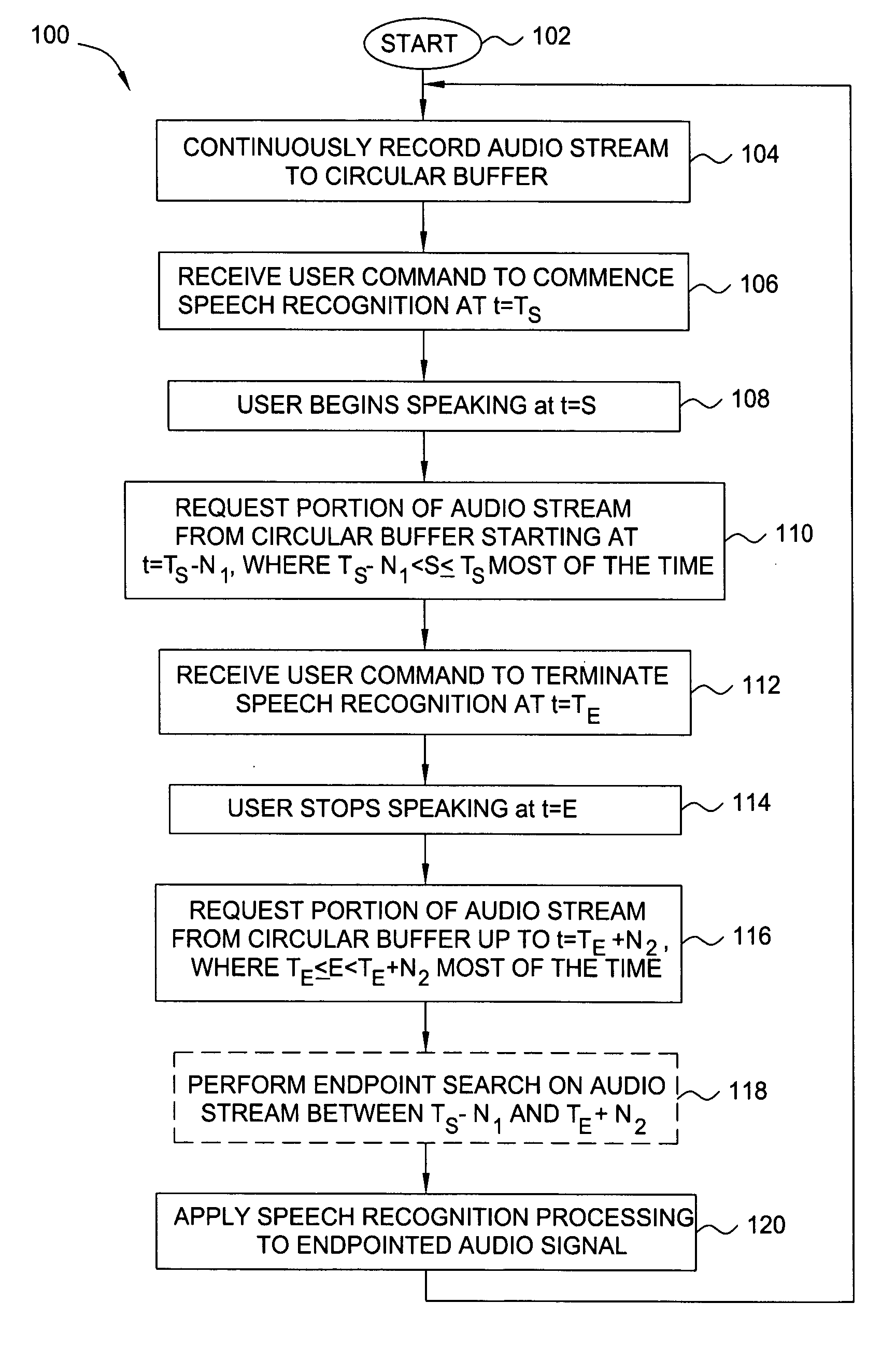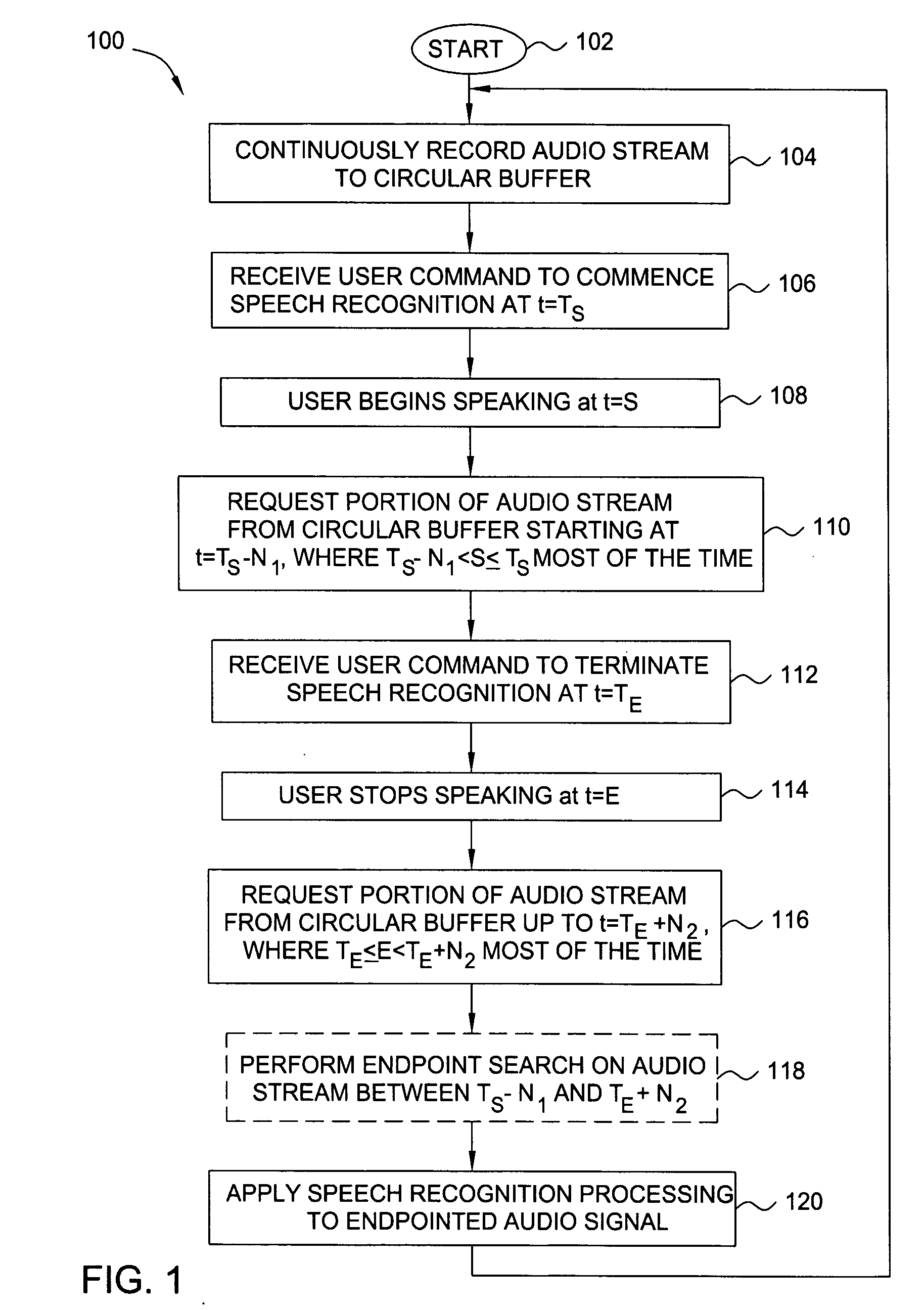Method and apparatus for obtaining complete speech signals for speech recognition applications
a speech recognition and speech technology, applied in the field of speech recognition, can solve the problems of obtaining a complete speech signal, affecting the accuracy of existing speech recognition systems, and requiring processing of incomplete speech signals,
- Summary
- Abstract
- Description
- Claims
- Application Information
AI Technical Summary
Problems solved by technology
Method used
Image
Examples
first embodiment
[0038]FIG. 3 is a flow diagram illustrating a method 300 for performing an endpointing search using an endpointing HMM, according to the present invention. The method 300 may be implemented in accordance with step 206 and / or step 212 of the method 200 to detect endpoints of speech in an audio signal received by a speech recognition system.
[0039] The method 300 is initialized at step 302 and proceeds to step 304, where the method 300 counts a number, F1, of frames of the received audio signal in which the most likely word (e.g., according to the standard HMM Viterbi search criteria) is speech in the last N1 preceding frames. In one embodiment, N1 is a predefined parameter that is configurable based on the particular speech recognition application and the desired results. Once the number F1 of frames is determined, the method 300 proceeds to step 306 and determines whether the number F1 of frames exceeds a first predefined threshold, T1. Again, the first predefined threshold, T1, is c...
second embodiment
[0042]FIG. 4 is a flow diagram illustrating a method 400 for performing an endpointing search using an endpointing HMM, according to the present invention. Similar to the method 300, the method 400 may be implemented in accordance with step 206 and / or step 212 of the method 200 to detect endpoints of speech in an audio signal received by a speech recognition system.
[0043] The method 400 is initialized at step 402 and proceeds to step 404, where the method 400 identifies the most likely word in the endpointing search (e.g., in accordance with the standard Viterbi HMM search algorithm).
[0044] In order to determine the speech starting endpoint, in step 406 the method 400 determines whether the most likely word identified in step 404 is speech or silence. If the method 400 concludes that the most likely word is speech, the method 400 proceeds to step 408 and computes the duration, Ds, back to the most recent pause-to-speech transition.
[0045] In step 410, the method 400 determines whet...
PUM
 Login to View More
Login to View More Abstract
Description
Claims
Application Information
 Login to View More
Login to View More - R&D
- Intellectual Property
- Life Sciences
- Materials
- Tech Scout
- Unparalleled Data Quality
- Higher Quality Content
- 60% Fewer Hallucinations
Browse by: Latest US Patents, China's latest patents, Technical Efficacy Thesaurus, Application Domain, Technology Topic, Popular Technical Reports.
© 2025 PatSnap. All rights reserved.Legal|Privacy policy|Modern Slavery Act Transparency Statement|Sitemap|About US| Contact US: help@patsnap.com



